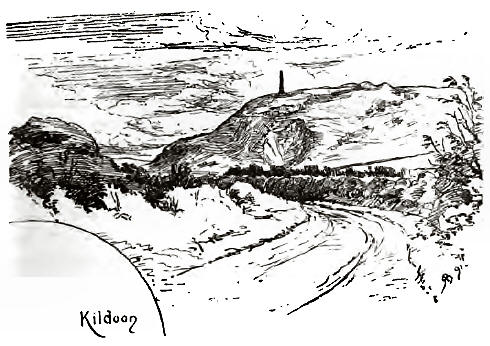IT is instructive to contrast the tall,
narrow, secluded tower, still standing in the glen off Drumlamford Road, and
known as "Kilkerran auld Castle," with the plain but spacious and
comfortable mansion known as Kilkerran House, a representation of which is
given above. These two buildings form a contrast of at least 300 years, and
tell of very different states of society. The Castle tells of a time when
life was insecure, and safety the first point to be attended to \ while the
House tells of a time when the poorest can sit under his vine and fig-tree,
none daring to make him afraid. The grounds about Kilkerran are famed for
their beauty. The Todey Glen behind the House, and the Lady Glen beyond the
fine gardens, are well known to all lovers of scenery; while the magnificent
beech by the entrance drive, ^nd sundry specimens of the Silver fir, 100
feet high, in the Lady Glen, are admired by all lovers of forestry.
The Fergussons are a very old family in
Carrick, being mentioned in records as far back as the days of Robert Bruce.
Sir Adam was eulogised by Burns in his Earnest Cry and Prayer as
"Thee, aith-detesting,
chaste Kilkerran."
He represented Ayrshire in Parliament for
eighteen years, and Edinburgh for four. But none of the family was more
loved than the late Sir Charles, whose monument now stands on Kildoon. He
dwelt among his own people, and served his generation faithfully by the will
of God. He built the West Church, and Crosshill Church, and supported many
local schools beside, while he was eyes to the blind, feet to the lame, and
a father to the poor. Sir James, the present Under-Secretary for Foreign
Affairs, served himself heir to most of his father's charities, as well as
serving his country as Colonial Governor all over the world.
The well-known monument on Kildoon was
erected in 1853 " by the tenantry and friends, in memory of Sir Charles D.
Fergusson of Kilkerran, who was born 26th August, 1800, and died 18th March,
1849."


